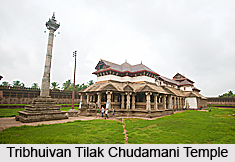 Shri Mudbidri Teerth located in Karnataka is a Jain pilgrimage centre. The teerth kshetra is situated in the Mudabidri village. The temple is dedicated to Lord Parshvanatha, the twenty-fourth Jain Tirthankara.
Shri Mudbidri Teerth located in Karnataka is a Jain pilgrimage centre. The teerth kshetra is situated in the Mudabidri village. The temple is dedicated to Lord Parshvanatha, the twenty-fourth Jain Tirthankara.
History of Shri Mudbidri Teerth
According to history Shri Mudbidri Teerth dates back to the ancient period. This temple is also called the Siddhanta temple. Thus bowing down to the idol is known as bowing down to Siddhantas. There are 35 idols of nine gems. As per reference in the fourth century B.C many temples were built here under the instructions of Bhadrabahuswami. One day a sage saw a tiger and a cow playing together in perfect harmony. He was very surprised seeing this exceptional view. The idol of Lord Parshvanatha was also unearthed from a place covered with thick grown trees. The holy was named as Guruvasadi, The idol of Lord Parshvanatha is believed to possess miraculous powers. Devotees from far off places visit the temple to offer their prayers. It is believed that if prayed with all devotion the Lord fulfils the wishes of the pilgrims.
Temple of Shri Mudbidri Teerth
The temple of Shri Mudbidri Teerth houses the idol of Lord Parshvanatha. The temple has been magnificently decorated with intricate artistic designs. The creative temple work boast about the skills of the craftsmen. The idol of the Lord is almost 450 cm in height and is black in colour. It is seen in a Kayotsarga posture. The idol has been beautifully carved from a single stone and looks very appealing. The smiling face of the Lord looks very calm and serene. The idol is made of nine gems. Apart from this there are seventeen other ancient temples here. These are all minutely carved with spectacular designs. Another shrine Tribhuivan Tilak Chudamani temple dedicated to Lord Chandraprabha was built in the year 1430 of the Vikram Samvat Era. The idol of the Lord is 270 cm in height in Khadgasana posture. It is installed in the open square of the temple. The temple is adorned with attractive sculpture of nine female elephants and five female horses. There are also many other idols made of the five metals and of rock crystal.
The Temple of Shri Mudbidri Teerth organises many annual gatherings and functions. There are provisions for dharamshalas or rest houses for the pilgrims. These are well equipped with all modern facilities. Apart from this there are Upashrays, an Ayambilshala and a Jnanabhandar. The temple being located on the confluence of the three holy rivers is enclosed by scenic beauty that enthrals and fascinates the pilgrims. The calm and tranquil environment and the surrounding greenery make it a suitable place for religious activities. The kshetra is well connected to road, rail and air. Taxi services and bus services are easily available here. The nearest railway station of Mangalore is at a distance of 35 kilometers.




















